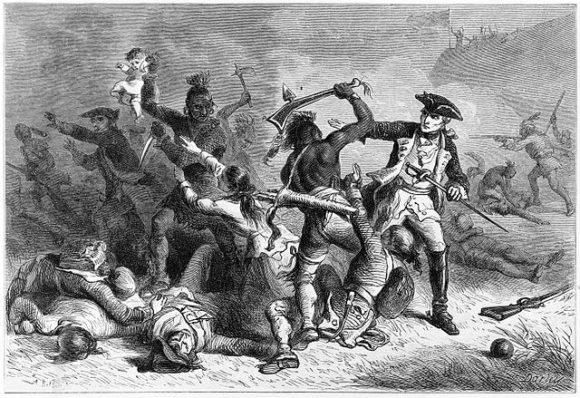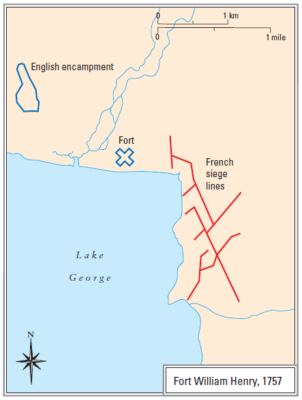Editor: Michael Spilling and Consultant Editor: Chris McNab
American Battles and Campaigns – The Siege of Fort William Henry
The French Marquis de Montcalm continued his policy of reducing the unsupported chain of British outposts meant to forestall French counter-thrusts down from Canada. A previous attack and difficulties in transport had left Fort William Henry damaged and with smaller artillery than those possessed by the French siege-train, which included mortars. LCol George Monro commanded 1500 regular and colonial garrison with 18 guns in the fort’s defense.


Montcalm’s forces included 6000 French and 2000 allied Indians, lured on by promises of glory and plunder. The fort’s strength prompted Montcalm to begin a classic European-style siege of trenches and traverses as his artillery weakened the fort’s walls and defenders, while allowing a message that reinforcements would not be forthcoming to reach Monro. Such tactics left Montcalm’s Indians bored and angry as the siege wore on for six days. In keeping with European tradition, Monro asked for terms when the French created a breach in the fort’s walls.
Montcalm granted honors of war and safe passage to British territory to the British, with the French retaining the fort and its stores. Indians out to profit from the campaign proceeded to do so on the night of the surrender, by taking the scalps of the British wounded left behind and, for the following two days, attacking and slaughtering as many as 184 of the departing garrison as they sought loot, scalps and prisoners to be held for profitable ransom. French efforts to stop the Indians proved ineffective, the massacre provoking an enduring storm of resentment among the English and colonists, since celebrated in literature.
Montcalm burned the fort and retreated back into Canada, while the British began preparations for a massive counter-thrust.
Dr. Chris McNab is the editor of AMERICAN BATTLES & CAMPAIGNS: A Chronicle, from 1622-Present and is an experienced specialist in wilderness and urban survival techniques. He has published over 20 books including: How to Survive Anything, Anywhere — an encyclopedia of military and civilian survival techniques for all environments — Special Forces Endurance Techniques, First Aid Survival Manual, and The Handbook of Urban Survival. In his home country of Wales, UK, Chris provides instruction on wilderness hunting techniques and he is also an experienced martial arts instructor.
